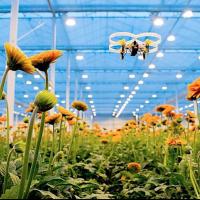In the face of a changing climate, coral reefs are dying all over the world. Coral reefs make up the foundation of ocean life, but 50% of them have been lost in the past three decades. Are coral reefs in danger of disappearing forever? A group of innovative researchers and divers is racing against the clock to prove otherwise.
Coral are fascinating underwater creatures that are part animal, mineral, and plant all at the same time. They thrive in the tropics but can grow virtually anywhere in the ocean, including its deepest depths, as long as there’s a hard surface for them to attach to.
New coral attaches itself to skeletons of other, older coral, which eventually provides the underlying structure of the ocean’s richest ecosystem.
What is a Coral Reef?
A reef is a collection of coral colonies, with the largest reef existing off the coast of Australia. The importance of coral reefs cannot be overstated. Often referred to as “the rainforests of the ocean,” these diverse ecosystems provide essential nutrients and shelter to over 4,000 species of fish and countless other marine animals, from crabs to jellyfish.
This extreme diversity has been a key player in the development of new medicines and even possible cures for cancer, arthritis, and other diseases. In addition, coral reefs act as a barrier between the waves and our coastlines, which means they protect our shores from tropical storms and erosion.
Conversations about the importance of coral reefs often include their contribution to the global economy. The extinction of coral would have a drastic impact on the tourism industry, as coral reefs provide a unique place for divers and snorkelers to explore. To put this into perspective, the Great Barrier Reef generates over a billion dollars every year in Australia.
Another concerning implication of coral reefs dying is the effect that it would have on the fishing industry. It’s estimated that over a billion people depend on coral reefs as a source of food, many of them in developing countries. In total, the goods and services that reefs provide tally up to about $375 billion annually.
Why Are Coral Reefs Dying?
The biggest contributor to coral reefs dying is higher water temperatures, and in order to understand exactly why, it’s necessary to look at the algae they live with.
Coral has a symbiotic relationship with algae: coral provides a home and algae provides some of the coral’s food through photosynthesis. However, rising water temperatures stress coral and cause them to essentially spit out the algae they normally live off of.
Without their main source of food, the coral turns white (also known as “coral bleaching”) and is at risk of dying from starvation. Because coral reefs could be in danger of disappearing for good, research labs all over the world are trying to come up with the best ways to save them from the effects of climate change.
And the labs are pulling out every trick in the book, including gene editing, selective breeding, and exposure therapy. One particular method includes the creation of super-coral, if you will, where coral are genetically modified to be more resilient to heat.
On the Frontlines of Coral Restoration
All of this research will eventually have to make its way into the wild. Enter the Coral Restoration Foundation, the Florida-based group that is diving into these challenges head first. The CRF is helping restore these vital ecosystems and they’ve increased their efforts tenfold in the last three years.
The Coral Restoration Foundation is on the frontlines of efforts to save coral reefs, particularly in the Florida Keys. The team came together in 2007 in response to the widespread loss of coral in the Florida Reef Tract, the third largest barrier reef in the world.
They’ve essentially built a massive nursery for coral, where they grow coral on over 400 “trees” suspended in the water. The trees, made of PVC pipes and fiberglass, help accelerate the growth rate of coral two to four times faster than they’d grow in a reef, depending on the species.
To start the process, a parent colony is fragmented using large cutting pliers. If you break a coral apart and attach its parts to a hard surface, it will keep on growing. Next, the team attaches these fragments to the underwater trees until the coral are mature enough to plant in reef sites.
A Race Against the Clock
Planting coral is not a new initiative, but planting on a large enough scale that’s necessary to save coral reefs is unprecedented. This project is a massive undertaking and scaling the work has created new challenges, such as how to monitor the growth and success of restoration efforts.
To meet this need, the CRF developed a game-changing photomosaic technique that allows divers to quickly scan over an area with an elaborate photography rig. They’re then able to create 3D models of their outplantings with the data and track them over time.
Today, over 100,000 corals have been outplanted across more than 20 restoration sites throughout the Florida Keys Reef Tract. The last few years have signified a time of massive growth for the Coral Restoration Foundation, shedding a ray of hope on the state of coral reefs, and this is only the beginning.
For more interesting news about the people and ideas that are changing our world, subscribe to Freethink.


